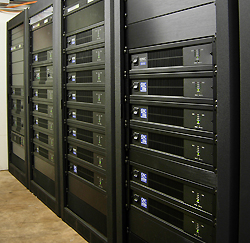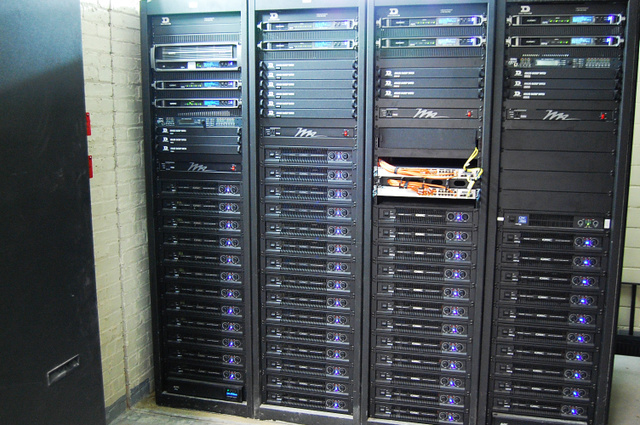
Security is money. Obviously callbacks cost time and therefore money. You have spent hours tuning and commissioning a system, measuring and modeling – only to have the client call because “something sounds funny.” On site, you’ve discovered that the local “talent” has gone into the system and completely modified everything.
In the old days, lockout plates, locked racks, and locked doors tried to thwart intervention, but were rarely effective. Certainly as more and more processing has moved from the analog domain to digital, many manufacturers are offering software based lockout features on their products.
The range of protection available is really broad. In some cases the password is a simple 4-digit pin that when correctly entered will unlock the full system. In other cases the security can rival that of some banking systems featuring multiple layers of password protection with variable length passwords.
Systems can be set up that offer minor control to the end customer, moderate control to an onsite resource, and only full control to the integrator. Tight security at an affordable price, can certainly result in a much more stable install, fewer damaged devices, happier customers—and ultimately—fewer callbacks.
Time is money – signal processing. System commissioning is one of the most time consuming and specialized portions of any project. Managing tuning, gain staging, levels, etc. are where the science turns into an art.
The primary tool for this phase of a project is some sort of digitally based signal processing unit. Currently, this capability has migrated into power amplification products that also integrate the majority of the necessary functionality in one unit. Although useful in certain circumstances, industry feedback shows that the difficulty in actually accessing the signal processing functions through a simple intuitive interface has driven many users back to stand alone processing hardware/software.
The most recent trend, driven largely by the prevalence of inexpensive graphic display tablets (and smart phones) and the desire for elegant visual interfaces, has begun to integrate sophisticated signal processing, easy to use graphical interfaces, and power amplification into one package.
Clearly, for enterprise-scale jobs, some sort of centralized processing will more likely be specified rather than using DSP in an amp, but for the smaller jobs, having a well-integrated, visual, and easy to configure DSP could well spell the true market acceptance of the signal processing integrated amplifier. If the required processing can be quickly configured without having to reach for a discrete solution, savings can be accumulated in configuration time, rack space, and wiring costs, more time doing the fun part of the job.
Many of these integrated solutions offer voicing for both manufacturer specific, as well as alternative loudspeakers. Thus, in summary, less time needs to be devoted to figuring out crossover and limiter parameters for a given loudspeaker more time devoted to optimizing system performance.
Time is money – service costs. One of the major time consuming portions of any system design is trying to figure out what type and how many spare products to keep in inventory or onsite at a given installation. Even the most reliable systems can fail at some time and users and suppliers must be prepared because nothing trumps maximum system up time.
Unfortunately, there is no scientific method to determine who is going to produce the most reliable product or products. In our small industry, generally long-term manufacturer reputation speaks loudest, followed by peer reviews and recommendations.
Really, at the end of the day, the only valid assessment that an integrator can make is based on how easily it is to repair or replace any given portion of an install. Are there multiple amplifiers or processor that can fill the spot of the broken unit? Can settings be transferred from one unit to another or from a backup to a new unit? Is the customer support from the manufacturer solid? What do your peers say? Hopefully the trend toward more and more reliability and excellence in customer support will continue industry wide.
In summary, the integrator needs to provide a solution that is affordable to the customer, meets the continually evolving needs of the marketplace, and puts money in his or her pocket. So here’s a short list of the key points to consider:
• Channel density – how many channels per rack space?
• Rack density – how many rack spaces per amp?
• Power density – how much power per rack space/channel?
• Thermal output – how many tons of AC will a given solution need – at idle and while running?
• Flexibility – how configurable is a given product – can one product meet many needs?
• Simplicity – how easy is a product to deploy, how deep is the catalog line?
• Expandability – is a product line able to adapt as system needs shrink or grow?
• Reliability – is the manufacturer known for building reliable gear? How do they treat you if there’s a problem?
A self-professed geek, Matt Skogmo is the director of hardware engineering at QSC where he oversees the development of all electronic hardware. An audio products designer at QSC for more 17 years, he’s still thrilled to wake up each morning and go to work doing what he loves best.
Editor’s Note: This article is a prelude to an in-depth treatise on multichannel amplifiers by Fred Ampel of Technology Visions Analytics that will be published in the January 2015 issue of Live Sound International as well as posted on PSW.

